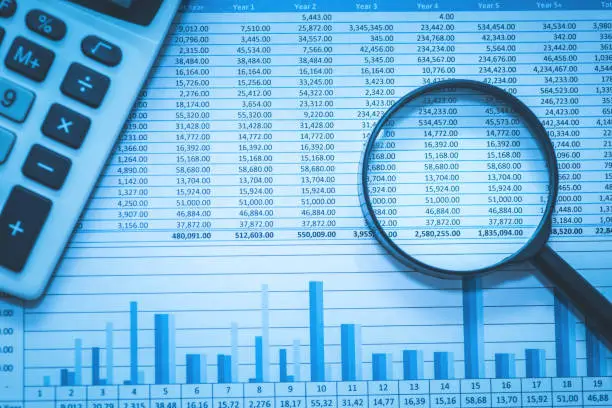This blog breaks down key economic indicators like GDP, employment, and inflation through clear analysis. Stay ahead of market trends and make informed financial decisions.
Title: Key Economic Indicators: Understanding the Pulse of the Economy
Economic indicators are crucial data points that provide valuable insights into the overall health and performance of an economy. These indicators serve as guiding lights for policymakers, businesses, investors, and consumers, helping them make informed decisions. By analyzing and interpreting these economic indicators, stakeholders can gain a comprehensive understanding of the current economic landscape and anticipate future trends.
In this article, we will explore some of the most significant economic indicators, their importance, and how they influence various aspects of the economy.
Gross domestic product
Gross Domestic Product (GDP) is often considered the most widely recognized economic indicator. It measures the total value of all goods and services produced within a country's borders over a specific period, typically a quarter or a year. GDP not only represents the size of an economy but also serves as a barometer for economic growth or contraction.
Unemployment rates
The unemployment rate is a crucial economic indicator that reflects the health of the labor market. It measures the percentage of the workforce that is actively seeking employment but unable to find jobs. A low unemployment rate generally indicates a strong economy with ample job opportunities, while a high unemployment rate may signal economic weakness and potential social challenges.
Interest rates
The inflation rate is an economic indicator that measures the rate at which the general price level of goods and services in an economy rises over time. It is typically expressed as an annual percentage change in the consumer price index (CPI) or other relevant price indices. Monitoring inflation is essential as it impacts purchasing power, cost of living, and the overall standard of living.
Interest rates
Interest rates are a crucial economic indicator that influences various aspects of the economy, including borrowing costs, savings rates, and investment decisions. Central banks, such as the Federal Reserve in the United States, play a pivotal role in setting benchmark interest rates, which can have ripple effects throughout the financial system and the broader economy.
Consumer Confidence
Consumer confidence is an economic indicator that measures the degree of optimism or pessimism among consumers regarding the overall state of the economy and their personal financial situations. High consumer confidence often translates into increased consumer spending, which drives economic growth, while low consumer confidence can lead to reduced spending and slower economic activity.
Manufacturing and Industrial Production
Manufacturing and industrial production are economic indicators that gauge the output levels of factories, mines, and utilities within an economy. These indicators provide valuable insights into the strength of the manufacturing sector, which is often seen as a bellwether for overall economic performance. Fluctuations in manufacturing and industrial production can impact employment, trade balances, and overall economic growth.
Housing Market Indicators
The housing market is a significant component of most economies, and its performance is closely monitored through various economic indicators. These include new home sales, existing home sales, housing starts, building permits, and home prices. A robust housing market can stimulate economic growth through construction activity, consumer spending on home furnishings, and increased demand for related services.
Trade Balance
The trade balance is an economic indicator that measures the difference between a country's exports and imports of goods and services. A positive trade balance (where exports exceed imports) is often considered favorable, as it contributes to economic growth and job creation. Conversely, a negative trade balance (where imports exceed exports) can indicate potential economic challenges and a reliance on foreign products.
Leading and Lagging Indicators
Economic indicators can be classified as leading or lagging indicators based on their ability to predict or confirm economic trends. Leading indicators, such as stock market performance, new orders for durable goods, and consumer expectations, tend to change before the overall economy shifts direction. Lagging indicators, like unemployment rates and corporate profits, typically confirm economic trends after they have already occurred.
The Importance of Economic Indicators
Economic indicators play a vital role in guiding decision-making processes for various stakeholders:
1. Policymakers: Central banks and government agencies closely monitor economic indicators to formulate and implement monetary and fiscal policies aimed at fostering economic growth, controlling inflation, and maintaining employment levels.
2. Businesses: Companies rely on economic indicators to make strategic decisions regarding investments, expansions, hiring, pricing, and inventory management. Understanding economic trends helps businesses anticipate changes in consumer demand and adapt their strategies accordingly.
3. Investors: Economic indicators provide valuable insights for investors, enabling them to make informed decisions about portfolio allocation, risk management, and identifying potential investment opportunities across various sectors and asset classes.
4. Consumers: Individuals can use economic indicators to gauge the overall economic climate, assess their personal financial situations, and make informed decisions regarding major purchases, savings, and employment prospects.
Interpreting Economic Indicators
While economic indicators offer valuable insights, it is important to interpret them in the broader context of the economy. No single indicator can provide a complete picture, and analysts often consider multiple indicators in tandem to gain a comprehensive understanding of economic trends.
Additionally, it is crucial to recognize that economic indicators can be subject to revisions, seasonal adjustments, and varying methodologies, which may impact their accuracy and comparability over time.
Conclusion
Economic indicators are the pulse of an economy, providing valuable data points that help stakeholders make informed decisions. From GDP and unemployment rates to inflation and consumer confidence, these indicators offer a window into the overall health and performance of an economy.
By understanding and interpreting economic indicators, policymakers, businesses, investors, and consumers can navigate the complexities of the economic landscape, anticipate trends, and make strategic decisions that contribute to economic growth and stability.


.jpg?locale=en)























